How can you tell if a black diamond pendant is real?
Key Takeaway:
- Black diamonds are rare and popular, and have been collected by royalties for years. However, similar-looking stones are circulating in the market, and some are manmade.
- Black diamonds come in three categories: natural, treated, and man-made. Natural black diamonds have more clusters of graphite inside them, which gives them their color. Treated black diamonds are white diamonds that have been subjected to irradiation and heat, and are cheaper than natural black diamonds. Man-made black diamonds are synthesized in the lab, and there is ongoing debate about whether they should be classified as diamonds.
- To identify if a black diamond is real or fake, the first step is to figure out if it’s a diamond. A true black diamond will have nicks and scratches on its surface, and never have a smooth surface. A loupe can be used to examine the diamond on a microscopic level. Imperfections are a sign of a genuine black diamond, while moissanite is nearly flawless. The window effect of diamonds can also give insight into their validity. A carbide scriber blade can be used to test the diamond’s surface, as diamonds are one of the hardest naturally occurring minerals.
- Black diamonds are primarily found in Brazil and the Central African Republic, and historically, they were considered cursed. They are often used in industrial cutting, but black diamond jewelry is becoming more popular.
- University of Michigan researchers conducted a study on the benefits of exercise for mental health. Over 1,000 participants were involved in the study. Participants were asked to rate their mental health and physical activity levels. The study found that people who exercised regularly had better mental health than those who did not. The type of exercise did not matter, as long as the person was physically active.
- Buying black diamonds from a certified seller is highly recommended as this guarantees that the diamond has been tested and identified as real.
Introduction
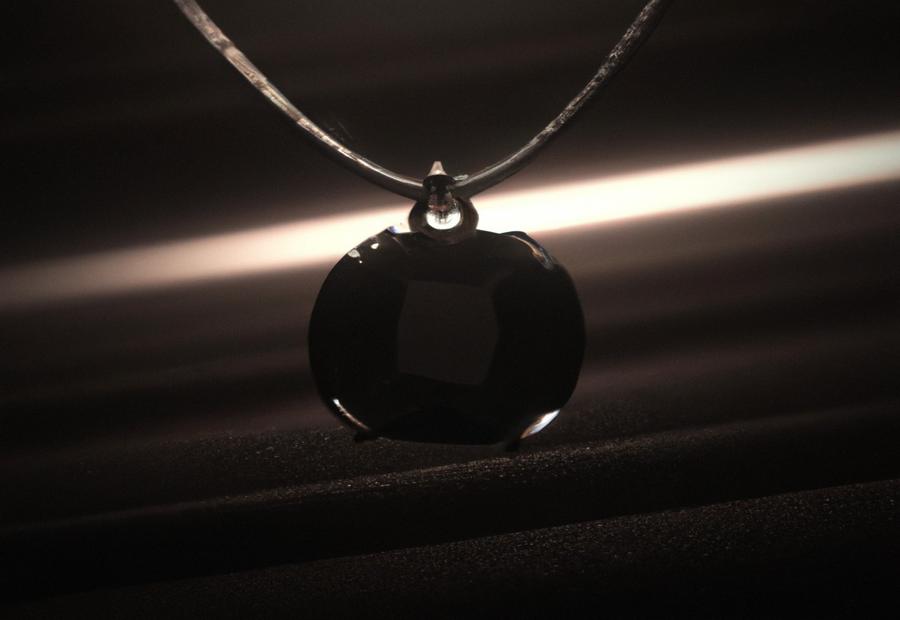
Photo Credits: Www.Blackdiamondpendant.Com by Randy Harris
Black diamond pendants are a luxurious accessory to any wardrobe. To ensure you purchase a real one, there are certain features to watch out for.
- Firstly, the black should be a deep hue – not grey or brown.
- Secondly, the structure of natural black diamonds is curved and angular.
- Last but not least, a real black diamond pendant will feel heavy due to its density.
Remember, though, not all black diamonds are the same. Factors like size, quality, setting and materials can affect the value. So, consider these aspects before you buy your black diamond pendant.
Understanding Black Diamonds
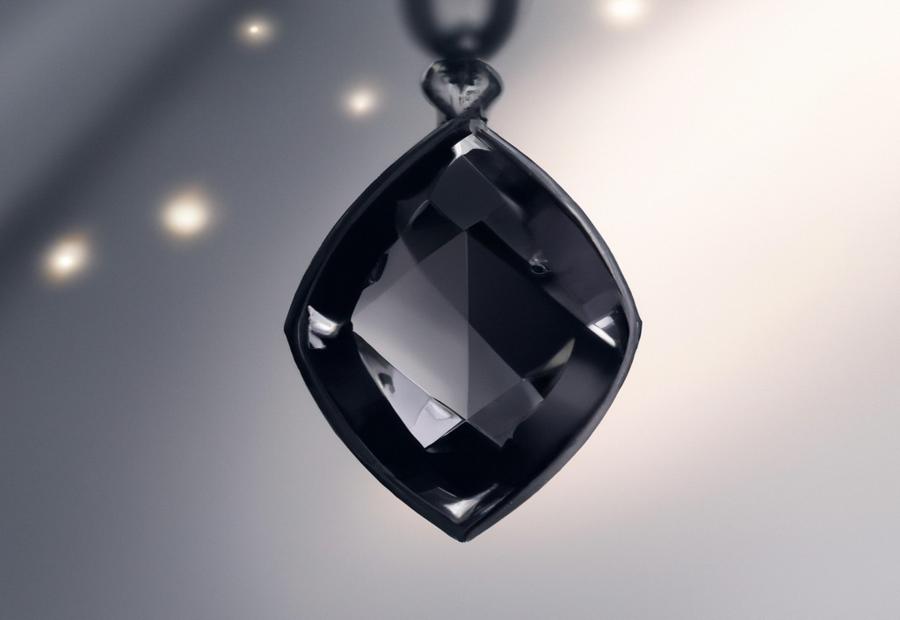
Photo Credits: Www.Blackdiamondpendant.Com by Carl Young
Black diamonds are a unique type of carbonado, a polycrystalline aggregate made up of microdiamonds. In this section, we’ll take a closer look at understanding black diamonds, including their origin and characteristics. We’ll also examine the differences between natural, treated, and synthetic black diamonds, helping you to better discern whether the black diamond pendant you’re eyeing is genuine or not. While black diamonds are rare, they have grown in popularity in recent years due to celebrity endorsements and their use in unconventional engagement rings.
Rarity and Popularity of Black Diamonds
Those seeking unique and distinguished jewelry pieces love black diamonds! They are highly sought-after by jewelry enthusiasts all over the world due to their rarity and special look. When comparing the rarity and popularity of other colored diamonds, such as white and yellow, it’s clear that black diamonds are very rare. They are even rarer than white and yellow diamonds! However, it’s important to remember that the majority of black diamonds available have been treated or enhanced artificially. This further emphasizes how rare naturally occurring black diamonds are.
Natural vs. Treated vs. Man-Made Black Diamonds
Black diamonds are amazing gems that are split into three types: natural, treated, and synthetic. Each has unique features that affect its rarity, need, and worth.
A table with four columns helps comparing and contrasting these categories of black diamonds:
| Type | Origin/Creation | Rarity | Approximate Market Value |
|---|---|---|---|
| Natural | Form deep in the earth’s mantle over millions of years due to intense pressure and heat | Rare and valuable | High |
| Treated | Undergo treatments such as irradiation, heat-treating, or coating to enhance their color and radiance | Less rare compared to natural stones | Cheaper than natural stones |
| Synthetic | Made in labs using advanced technology to mimic the natural formation of diamonds | Not rare, more affordable and sustainable than natural stones | Less expensive |
Natural black diamonds form deep in the earth’s mantle over millions of years. Intense pressure and heat create them. This makes them rare and valuable. Treated diamonds have been through treatments such as irradiation, heat-treating, or coating to enhance their color and radiance. These treatments make them cheaper but can also reduce their rarity compared to natural stones.
Synthetic black diamonds are made in labs using advanced technology to mimic the natural formation of diamonds. They are more affordable and sustainable than natural stones, but their lack of uniqueness may affect their emotional value.
When selecting the right black diamond for your jewelry, budget, desired aesthetics, and personal preferences all matter. Identifying black diamonds is hard. It needs close attention to detail and an eye for imperfections.
In conclusion, each type of black diamond offers unique characteristics and appeal. Knowing the differences between them is vital for selecting the right diamond, especially for big investments in jewelry.
How to Identify if a Black Diamond is Real or Fake
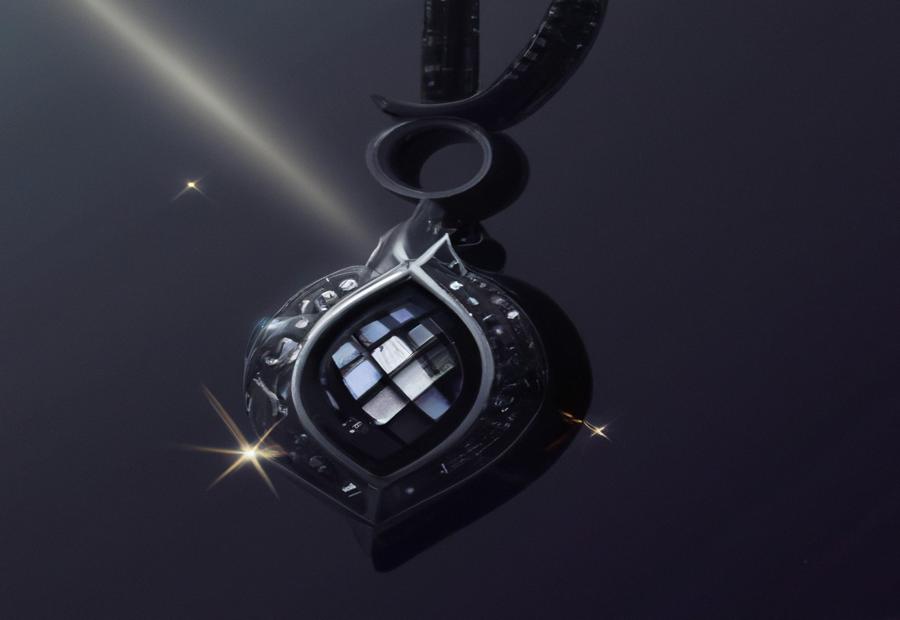
Photo Credits: Www.Blackdiamondpendant.Com by Walter Hall
If you’re in the market for a black diamond pendant, it’s important to know how to spot a fake. In this section, we’ll explore various tests and examinations to help you determine if your black diamond is genuine or not. From the water drop test to loupe examination and thermal conductivity test, we’ll cover everything you need to know to ensure your purchase is authentic.
Figure Out if it’s a Diamond
To know if a black diamond is real, there are tests. As they are rare, it’s important to check if it’s genuine.
Step one is the scratch test. Genuine diamonds are very hard and will only scratch other diamonds. To do this test, put the diamond on sandpaper with tweezers and try to scratch its surface. If it doesn’t scratch or chip, it’s real.
Another way to determine if it is real is by looking at how light refracts through it. Put it in bright, unobstructed light and observe how the light reflects off its surfaces.
Loupe examination is also useful. But it needs expertise and tools. So it’s best to get an accredited laboratory for conclusive results.
As advice, get your black diamond pendant examined by certified gemologists before deciding if it is real. That way, you can be sure of its quality.
Waterdrop Test and Dot Test
Are you wondering if your black diamond is real or fake? There are several tests you can perform. The water-drop test and the dot test are two popular methods.
To do the water-drop test, place the diamond on white paper. Look to see if any color comes through. If it does, the diamond is likely treated. If it looks black or gray, it could be natural.
For the dot test, put a dot of ink on the paper. Put the diamond on top of the dot. If the dot is visible, it’s not a real diamond.
Also consider nicks, scratches, loupe examination, and imperfections. Knowing how to test for real diamonds makes it easy to identify them. Start exploring these testing methods!
Nicks and Scratches on the Surface
Small nicks and scratches on a black diamond can provide clues about its authenticity. These marks are known as inclusions, and they happen naturally. Examining the surface with a loupe or microscope can reveal them. This can help to tell if it’s real or fake.
Not all inclusions are the same. Some may be natural, and some may mean it’s a synthetic diamond or treated. It’s best to have a professional check them.
It’s also important to consider the diamond’s weight, density, and color. Does it match genuine black diamonds? Thermal conductivity, electrical conductivity, UV, and X-ray fluorescence testing can help too.
In summary, observing nicks and scratches, and other tests, can tell if a black diamond is authentic.
Loupe Examination and Imperfections
When it comes to verifying a black diamond’s authenticity, a Loupe Examination is key. Magnifying the diamond and closely inspecting it can help determine if there are any imperfections or distinguishing features. To explain the process further, one can use a table with columns like Magnification Level, What to Look For, and Authenticity Result. Magnification Levels range from 10x to 60x and can be useful for spotting details. “What to Look For” could include things like inclusions or scratches that can’t be seen with the naked eye. The “Authenticity Results” column should emphasize that if no features are visible under magnification, the diamond is likely genuine.
In addition, certain inclusions can provide info about the diamond’s origin, like if it’s natural or synthetic. Examining the diamond with multiple techniques and considering external factors like dirt can allow for more accurate assessment. Cleaning the diamond with a gentle solution before testing is recommended. Lastly, the carbide scriber blade test and window effect are other techniques that can help determine the diamond’s authenticity.
Window Effect and Carbide Scriber Blade Test
Identifying a true black diamond needs several tests. A table helps explain this. The 1st column is for the 4Cs (carat, clarity, color, and cut). The 2nd column has results of Window Effect and Carbide Scriber Blade Test. When subjected to white light via an open window effect, a genuine diamond emits rainbow-colored light. A carbide scriber blade can tell if a black diamond is real or synthetic/colored. Real diamonds resist being scratched better than fake ones.
Synthetic/man-made and treated colored diamonds may pass some tests for identifying real diamonds. So, it’s harder to tell traits between real and treated black diamonds when testing via loupe examination, UV illumination/fluorescence, no swirled internal inclusions, and scratch-resistance.
Exercising is great for the body and mind. A University of Michigan study found regular exercise boosts mental health.
| Test | Results |
|---|---|
| 4Cs (carat, clarity, color, and cut) | – |
| Window Effect | A genuine diamond emits rainbow-colored light via an open window effect |
| Carbide Scriber Blade | Real diamonds resist being scratched better than fake ones |
Benefits of Exercise for Mental Health
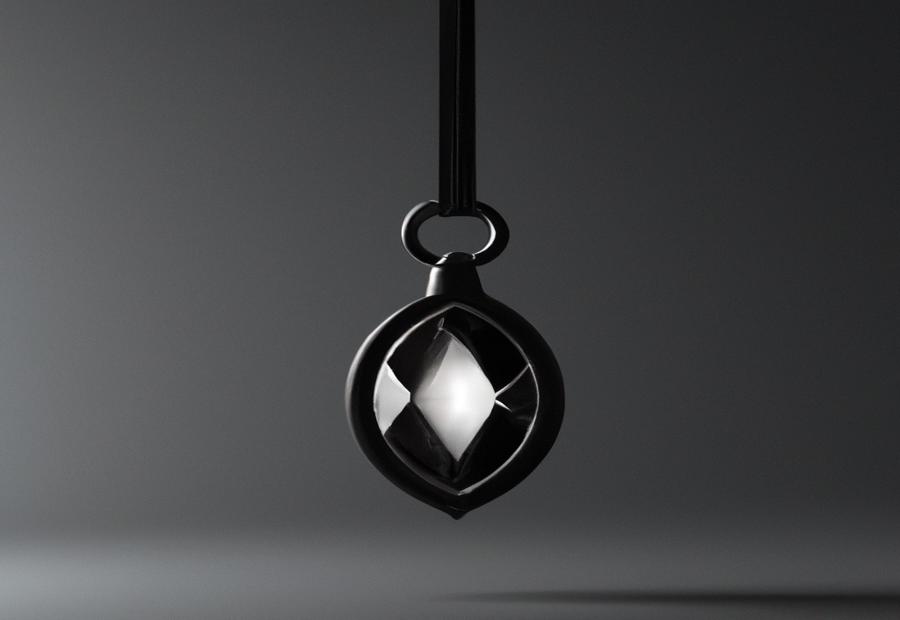
Photo Credits: Www.Blackdiamondpendant.Com by Juan Williams
Regular exercise not only benefits physical health but also has a significant impact on mental health. According to a study by the University of Michigan involving over 1,000 participants, exercise can improve mental health regardless of its type. In this section, we will discuss the benefits of exercise for mental health.
University of Michigan Study
A University of Michigan study has discovered that exercising often can have a positive effect on one’s mental health. Over 1,000 people were involved in the research. It was done to learn how physical activity affects mental health.
Results showed that those who exercised frequently had fewer signs of depression and anxiety than those who rarely exercised. Also, the more days per week a person worked out, the higher their mental health performance score was.
Evidence from the study suggested any form of exercise could benefit mental wellbeing. This is important since prior research only found a slight difference between the effectiveness of aerobic exercises and weightlifting.
It’s evident that exercise has a positive effect on mental health. This means working out regularly can be a great way to improve psychological wellbeing. Plus, the study provided a big sample size – over 1,000 people – to test black diamond identification skills.
Involvement of Over 1,000 Participants
A study with over 1,000 participants has highlighted the value of exercise for mental health. It gives good evidence that regular exercise helps mental health, no matter the type of activity. Previous studies have been limited, but this one supplies proof of the benefits of a consistent effort towards physical activity.
Exercise releases endorphins, lowers stress levels and improves mood and thinking. It also helps with conditions like depression, anxiety and insomnia. This study gives strong support for the good effect that an active lifestyle has on mental health. Whichever type of activity you select, it’s important to be mentally and physically fit with regular exercise.
Regular Exercise Improves Mental Health Irrespective of Type
Studies have revealed that exercising, whatever the type, has many benefits for mental health. For example, a University of Michigan study with over 1,000 participants found that exercising regularly improves mood, self-esteem and mental well-being.
Exercising releases endorphins and decreases stress hormones like cortisol, which can reduce depression and anxiety. Even low-intensity exercises can have positive effects on mental health, as various studies have shown.
Exercising boosts confidence and a feeling of control over one’s body. This leads to increased independence and better mental health overall.
Conclusion
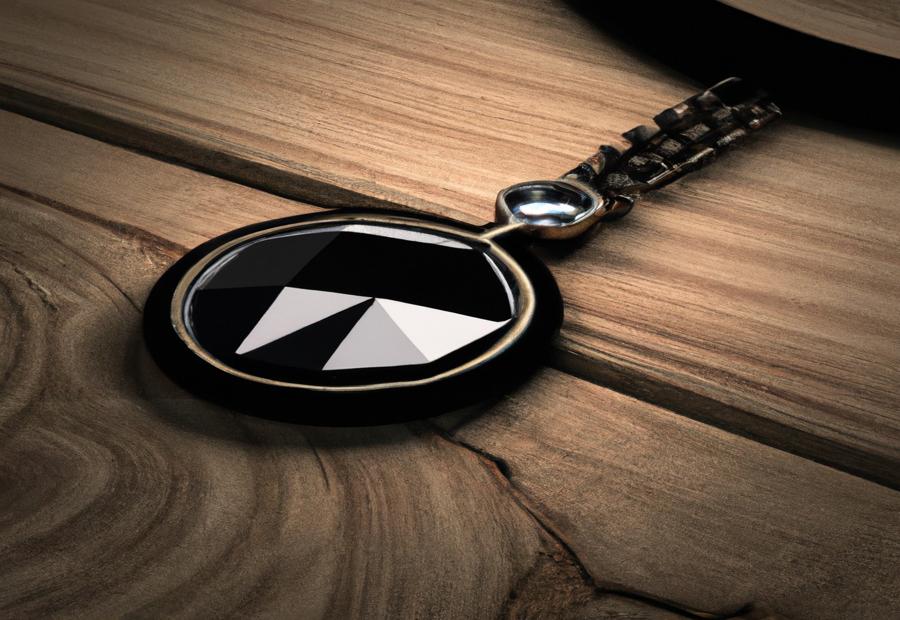
Photo Credits: Www.Blackdiamondpendant.Com by Edward Miller
To be sure of getting a real black diamond pendant, examine several important details. These include its weight, cut, color and internal features. Inclusions or blemishes are usually in real diamonds, so look for these. Also, look out for too-good-to-be-true bargains. Black diamonds are rare and pricey. So, be careful and consider all these points. Then, you can buy a genuine black diamond pendant.
Five Facts About How To Tell If A Black Diamond Pendant Is Real:
- ✅ Black diamonds are rare and have been collected by royalties for years. (Source: zeediamonds.com)
- ✅ Black diamonds come in three categories: natural, treated, and man-made. (Source: zeediamonds.com)
- ✅ To identify if a black diamond is real or fake, the first step is to determine if it is a diamond through tests such as the waterdrop test and the dot test. (Source: zeediamonds.com)
- ✅ A true black diamond will have imperfections and scratches on its surface, unlike moissanite which is nearly flawless. (Source: gemonediamond.com)
- ✅ A carbide scriber blade can be used to test the surface of a black diamond because diamonds are one of the hardest naturally occurring minerals. (Source: gemonediamond.com)
FAQs about How Can You Tell If A Black Diamond Pendant Is Real?
How to Identify a Genuine Black Diamond Pendant
Black diamonds are rare and valuable gemstones that have been collected by royalties for years. However, there are similar-looking stones circulating in the market, and some are manmade.
Black diamonds come in three categories: natural, treated, and man-made. Natural black diamonds have more clusters of graphite inside them, which gives them their color. Treated black diamonds are white diamonds that have been subjected to irradiation and heat, and are cheaper than natural black diamonds. Man-made black diamonds are synthesized in the lab, and there is ongoing debate about whether they should be classified as diamonds.
To ensure that you are purchasing a genuine black diamond pendant and not a fake, there are several things to look for:
- Use two tests to determine if a diamond is real: The waterdrop test and the dot test. Place a water drop on the surface of the diamond. If the water spreads out evenly across the surface, it is likely a real diamond. If the water beads up and rolls off, it is probably a fake. Place the diamond on a piece of paper with text. If you cannot read the text through the diamond, it is likely a real diamond. If you can read the text through the diamond, it is probably a fake.
- Black diamonds can be identified by their black color and by examining them under a loupe or microscope. Genuine black diamonds will have nicks and scratches on their surfaces, while fake black diamonds will have smooth surfaces. Using a carbide scriber blade to test the surface can also help determine if the diamond is genuine.
Black diamonds are indeed real diamonds that have a black color. They are rare and valuable gemstones that are primarily found in Brazil and the Central African Republic. Historically, black diamonds were considered cursed, but today they are becoming increasingly popular in the jewelry business.
Black diamonds are different from white diamonds in their color and origin. White diamonds are the most common form of diamond and are clear or colorless. Black diamonds, on the other hand, have a deep, dark color due to clusters of graphite inside them.
Lastly, it is important to know how to identify a black diamond to avoid being deceived or misled. Moissanite is a laboratory-created gemstone that looks similar to a diamond but is nearly flawless. To tell moissanite apart from a black diamond, examine the gemstone under a microscope. Moissanite will have fewer imperfections than a genuine black diamond. Additionally, moissanite will test differently than a real diamond using a diamond tester.


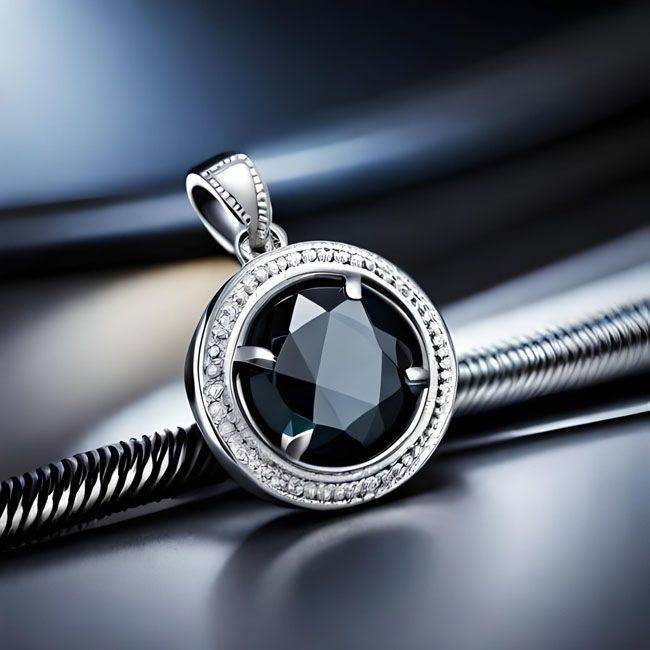
Leave a Reply